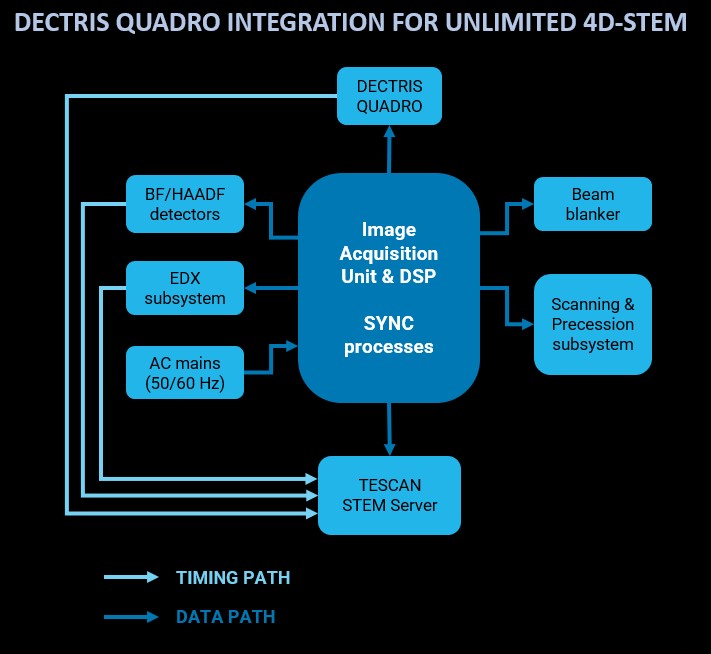
DETECTOR INTEGRATION DONE RIGHT
SEAMLESS DETECTOR INTEGRATION: UNLOCKING FULL 4D-STEM POTENTIAL
What if the speed of a direct detector was not limited by other microscope subsystems?
What if synchronization of all different modules needed for 4D-STEM was done only from one interface?
And what if the synchronization was hidden from the operator altogether?
How would that change your way of working and time to results?
Fast and sensitive direct electron detectors have revolutionized many scientific fields using (scanning) transmission electron microscopy, however only full integration in the electron microscope can exploit their advantages to the full potential.
An optimal detector must provide high dynamic range, minimal background noise, high speed of acquisition, and radiation hardness. Detection of structural information using diffraction measurements puts enormous demands not only on the detectors and camera architectures, but also on precise synchronization of detector readout with other subsystems of the microscope. In the case of 4D-STEM, this includes scanning of the selected region of interest with electron beam, beam blanking between image pixels and beam precession, which improves quality and extends resolution of diffraction data.
This is only possible when the detector and all other systems are integrated within the same instrument, otherwise performance of the individual systems may be compromised by connection of only basic modules, slow data handling, and limited instrument control.

Find out more in our new white paper, how the state-of-the-art direct electron detector that is optimized for diffraction measurements is fully integrated in TESCAN TENSOR to maximize efficiency and throughput of phase mapping and strain measurements at the nanoscale.
